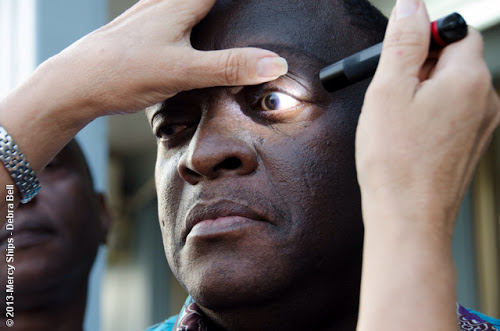Understanding the Various Vision Correction Procedures Available for Clearer View
In the world of vision adjustment procedures, a wide range of alternatives exist to deal with refractive errors and offer people with clearer sight. From the extensively acknowledged LASIK surgery to much less intrusive treatments like PRK and implantable lenses, the area of ophthalmology uses a series of strategies customized to match various requirements and choices. Each procedure comes with its own collection of considerations, advantages, and prospective risks. Recognizing the subtleties of these vision improvement techniques is important for making educated choices regarding one's aesthetic health and wellness. Let's discover the complexities of these procedures and shed light on the course to achieving enhanced vision clearness.
LASIK Surgery
LASIK surgical treatment is a common refractive procedure utilized to deal with vision troubles such as astigmatism, nearsightedness, and farsightedness. This surgical technique, which represents Laser-Assisted sitting Keratomileusis, intends to reshape the cornea to improve exactly how light is concentrated on the retina, ultimately boosting vision quality. During the treatment, a thin flap is produced on the cornea, and a laser is used to eliminate specific amounts of cells to improve it appropriately. This reshaping enables light to be precisely focused onto the retina, dealing with refractive mistakes.
Among the key advantages of LASIK surgery is the rapid enhancement in vision experienced by clients. Many individuals discover a significant enhancement in their sight immediately after the treatment. Additionally, most clients report minimal pain and discomfort during the surgical treatment and healing duration. The recovery time for LASIK is reasonably fast, with lots of individuals returning to their day-to-day tasks within a day or 2 post-operation. On the whole, LASIK surgery is a preferred selection for individuals looking for a long-term solution for their vision problems.
PRK Treatment

PRK is a suitable choice for individuals with slim corneas or those at a greater danger of eye injuries, as it does not include developing a corneal flap. The recovery procedure for PRK is slightly longer compared to LASIK, as the epithelium needs time to regrow. Clients may experience pain and blurry vision for a couple of days following the procedure.
Despite the longer recuperation time, PRK can produce superb outcomes in vision renovation, making it a valuable option for those who may not appropriate candidates for LASIK surgical treatment. - Eye Doctors in Andalusia
Implantable Lenses
In comparison to PRK where the cornea is improved directly, implantable lenses supply one more approach for dealing with vision by putting man-made lenses inside the eye. This procedure is particularly helpful for people with high degrees of nearsightedness, farsightedness, or astigmatism that might not be ideal candidates for laser surgical procedures like LASIK or PRK.
Implantable lenses, also referred to as phakic intraocular lenses, job by supplementing the eye's all-natural lens with a synthetic one. These lenses can be placed before the all-natural lens (former chamber) or behind the iris and in front of the all-natural lens (posterior chamber) By readjusting the power and positioning of these lenses, eye doctors can properly correct refractive mistakes and boost visual skill.
One advantage of implantable lenses is that they are exchangeable and detachable, offering versatility for future modifications. Nevertheless, just like any kind of medical treatment, there are risks involved, such as infection or cataract formation. Individuals taking into consideration implantable lenses need to speak with an eye care specialist to determine the most ideal option based on their individual needs and eye health.
Corneal Rings

The procedure for placing corneal rings is fairly quick and minimally invasive, typically executed as an outpatient treatment. Throughout the surgical treatment, the ophthalmologist makes a small cut in the cornea and inserts the rings at a specific deepness. Once in position, the rings assist to improve the cornea, giving a smoother surface for light to enter the eye, which can lead to clearer vision.
Corneal rings are taken into consideration a relatively easy to fix treatment, as they can be removed or changed if needed. While they might not completely remove the requirement for glasses or contact lenses, corneal rings can dramatically improve vision high quality and total visual convenience for individuals with keratoconus or various other corneal abnormalities.
Refractive Lens Exchange
Complying with the modification of corneal irregularities with procedures like corneal rings, one more vision modification technique that can attend to refractive errors is Refractive Lens Exchange (RLE) RLE is an operation that entails replacing the eye's all-natural lens with a man-made intraocular lens (IOL) to deal with refractive errors such as nearsightedness, farsightedness, and presbyopia. This procedure is especially helpful for individuals who might not appropriate candidates for treatments like LASIK or PRK due to variables such as thin corneas or high refractive mistakes.
Recovery time for RLE is fairly quick, and patients can anticipate enhanced vision quickly after the procedure. As with any kind of medical treatment, possible dangers and difficulties exist, so an extensive appointment with an eye care specialist is important to determine if RLE is the ideal vision modification option.
Final Thought

In the realm of vision correction procedures, a wide range of choices exist to resolve refractive errors and supply people with more clear sight.LASIK surgical procedure is a typical refractive procedure used to remedy vision issues such as astigmatism, nearsightedness, and farsightedness.While likewise a common refractive procedure, the PRK (Photorefractive Keratectomy) technique differs from LASIK surgical procedure in its method to remedying vision problems.Adhering to the adjustment of corneal abnormalities with procedures like corneal rings, one more vision adjustment strategy that can resolve refractive errors is Refractive Lens Exchange (RLE) LASIK surgical procedure, PRK procedure, implantable lenses, corneal rings, and refractive lens exchange are all options that can address different vision concerns.